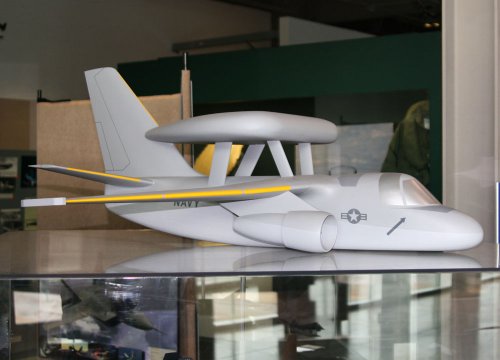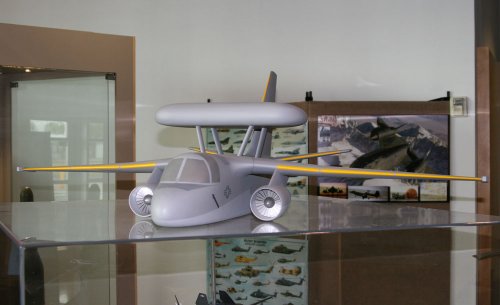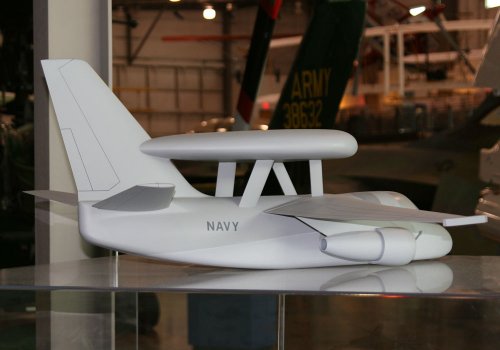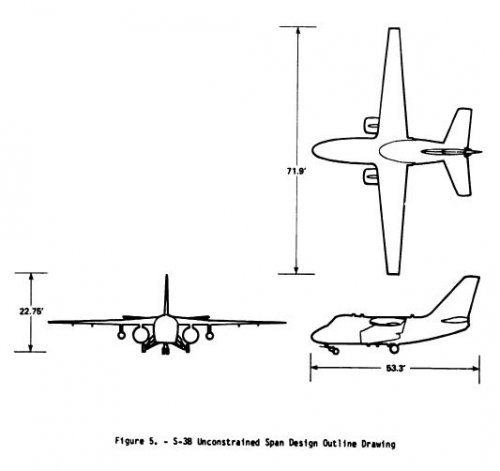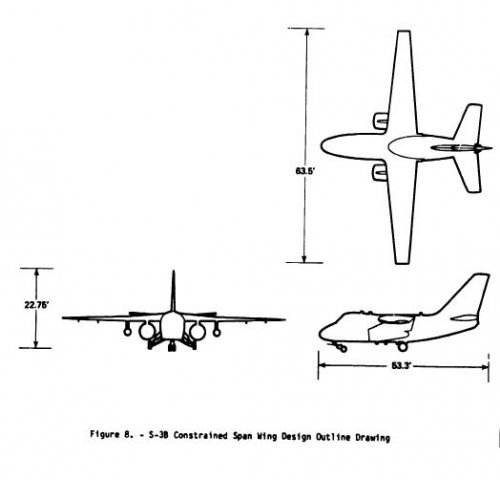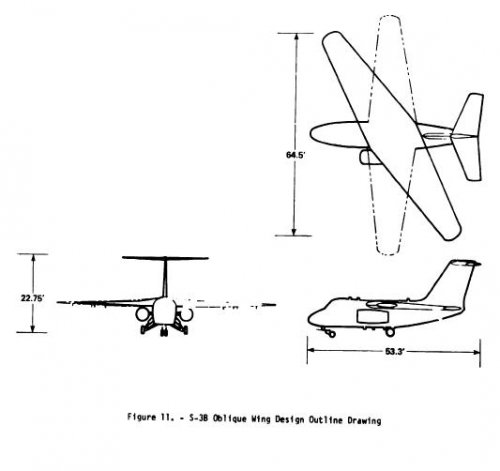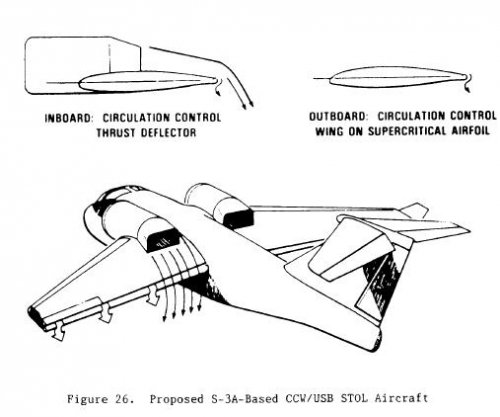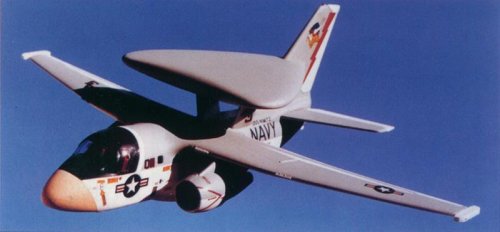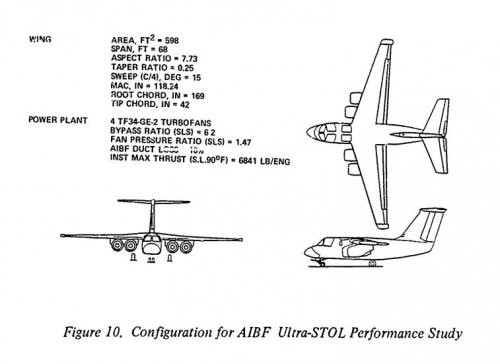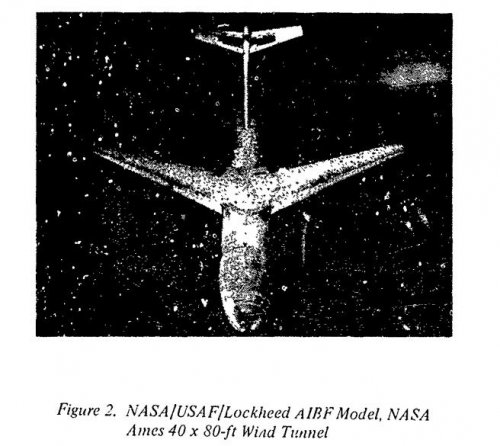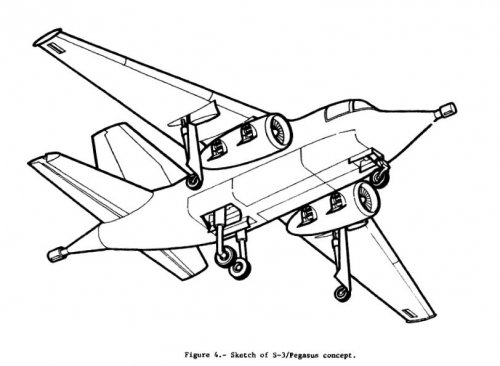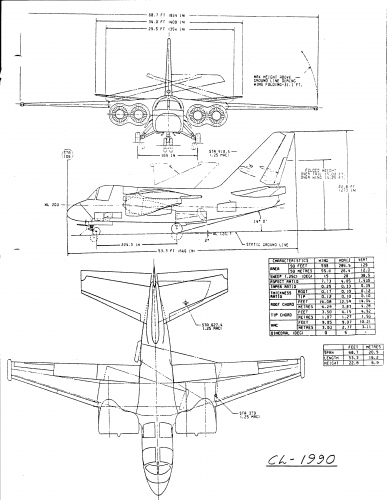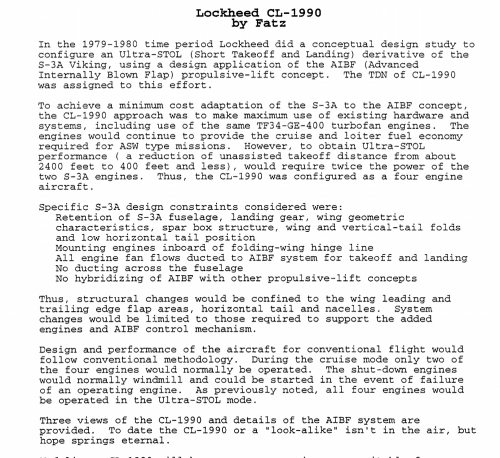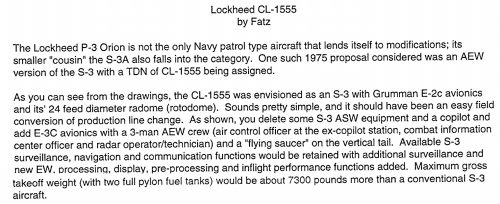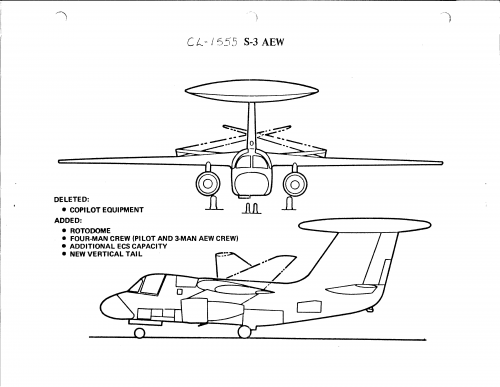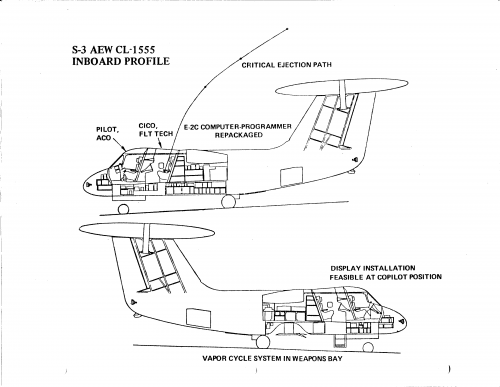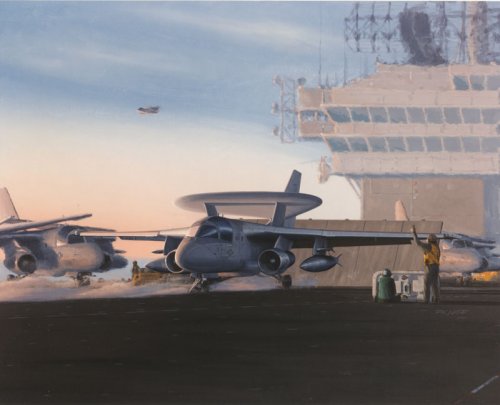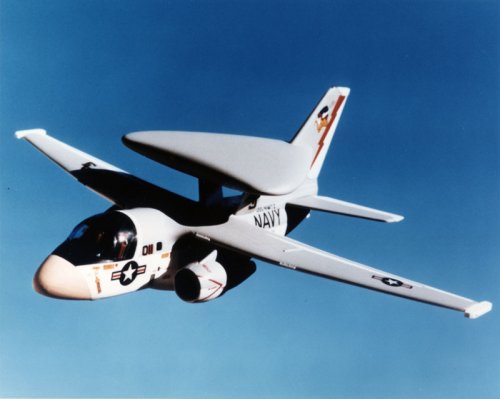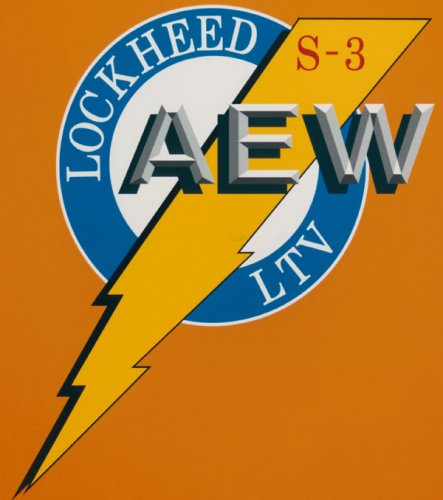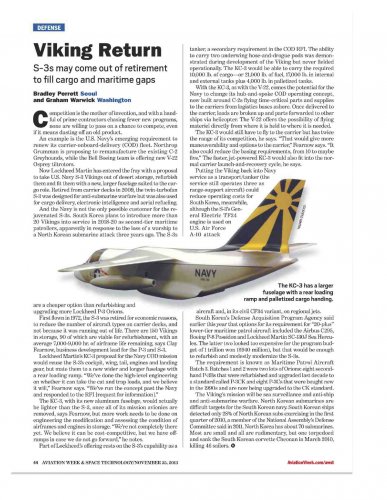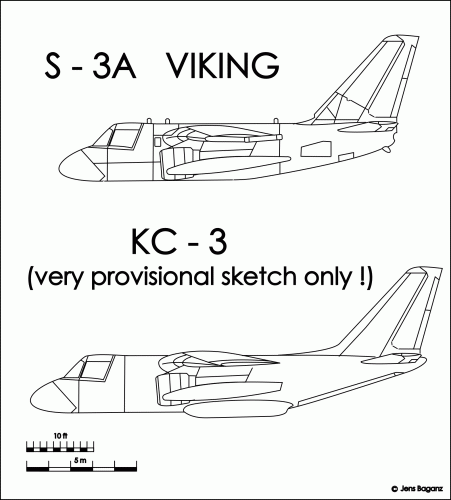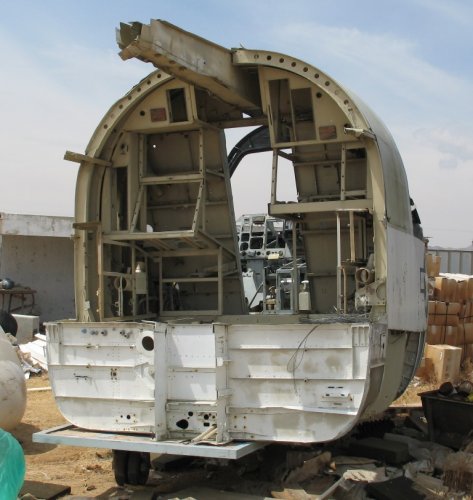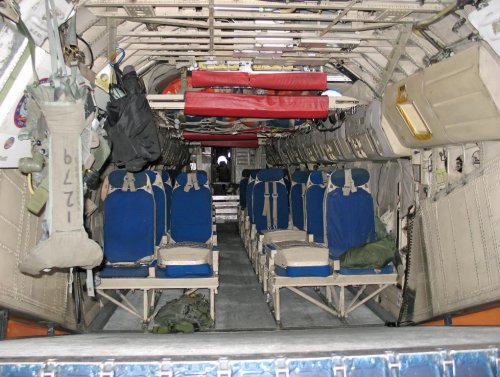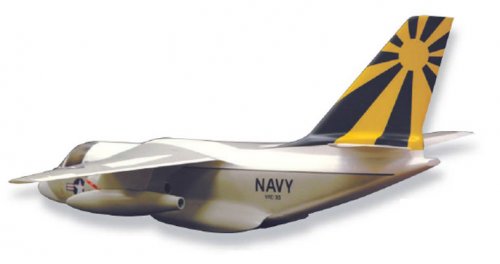Thank you for that. Here is an excerpt:
"One of the interesting derivatives of the "stock" S-3A was a modification for the "carrier on-board delivery (COD)" cargo / personnel transport role. Lockheed initially proposed a major redesign of the Viking for COD operations, featuring a longer and wider fuselage with a rear loading ramp and accommodations for 30 passengers, plus more powerful engines to handle the bigger airframe. The Navy didn't buy the idea, so Lockheed came up with a minimum-change solution, originally given the designation "S-3A(COD)" but then redesignated "US-3A". Combat avionics were removed, with a color navigation radar and a LORAN-Omega navigation beacon receiver installed. The seats for the SENSO and TACCO were removed, though a place was installed for a loadmaster. The US-3A could carry six passengers or up to 2,125 kilograms (4,680 pounds) of cargo internally in a cargo hold with 7.6 cubic meters (10 cubic yards) of usable space. It could be fitted with either an external tank or a cargo pod under each wing, depending on whether the mission demanded range or load.
One of the original YS-3A Viking prototypes was converted as a demonstrator, performing its first flight on 2 July 1976. The Navy was impressed, but decided to standardize on the Grumman C-2A Greyhound instead. However, the Navy did acquire six more US-3A conversions to meet a specialized COD requirement. They provided service during the Gulf War, but were retired in the mid-1990s. One was lost in a crash. The US-3A's cargo pods, known as "blivets", were carried on other Viking variants on rare occasions."
I think that there are actually three COD versions that were proposed or built:
1-the original COD proposal, with a much larger fuselage.
2-the actual US-3A COD that was built, essentially consisting of the standard fuselage with the interior stripped out to serve in the COD role.
3-the COD version mentioned in Polmar's Naval History magazine article, which would have consisted of the basic S-3 airframe with a 70-inch fuselage plug. The article linked above does not refer to that version.

